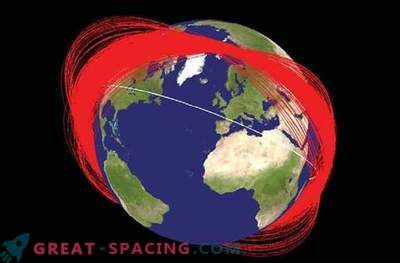
The photo, released by the Iranian Ministry of Defense on July 27, 2017, shows the Simorgh launch vehicle (Phoenix) on the launch pad in an unknown location
Iran launched a satellite that could not go into orbit. The United States reacted negatively to the launch event, as American representatives commented on January 15. The Minister of Information and Communication Technologies of Iran, Mohammad-Javad Azari Jahromi, said that the Payam satellite was successfully tested at the first and second stages.
However, during the actual launch, the satellite failed to reach the required speed when separated from the rocket at the third stage. Payam created in Tehran University of Technology. Iran is still planning to send one satellite (Doosti) to low Earth orbit. The launch date is not called, but the altitude has already been chosen - 250 km.
Iranian officials say the Payam and Doosti satellites are designed to collect information about changes in Iran’s environment. Earlier in January, US Secretary of State Mike Pompeo said that Iran’s plans to send a satellite into orbit would violate the UN Security Council resolution, which approved the 2015 nuclear energy agreement between major states and Tehran. As part of the agreement, Tehran has reduced most of its own nuclear program, but continues to develop ballistic missile technology. UN Resolution 2231 calls on Iran to refrain from testing missiles capable of transporting nuclear weapons, but there is no ban on launching missiles in general.
Washington says Iran’s space launches violate the resolution. It is reported that on January 3, in the missiles with Iranian satellites, they used technology that was almost identical with nuclear ballistic missiles. In Tehran, they disagree and declare that the satellite is part of a civilian project with purely scientific purposes.











































